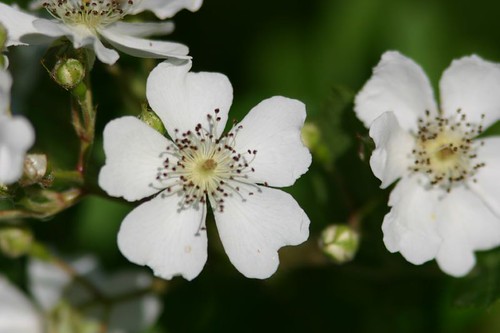Sedge Wren, AKA Short-billed Marsh Wren:
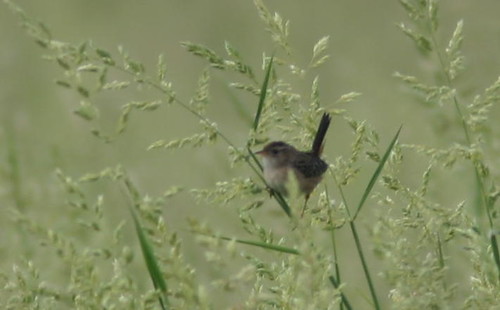
At the edge of Troy Meadows, New Jersey, in 1951, after I had been keeping bird lists for about three years, I saw my first Sedge Wren. It was the 162nd species on my life list. At that time it was called the “Short-billed Marsh Wren” to distinguish it from Its longer-billed relative, which I had identified as life bird #96 during the previous year. My first “Long-billed Marsh Wren” (now simply called Marsh Wren) was in “The Meadows” along Berry’s Creek and the Hackensack River, later to be distinguished as “The Meadowlands,” home to the NY Giants Stadium. (I described one of my childhood adventures there in an earlier post, Odd Jobs and Toxic Waste, but I digress).
So, both birds were seen in “meadows,” right? Technically, not quite. The dictionary defines a meadow as a field that contains mostly grass and non-woody plants, usually quite level, and sometimes low and moist, and often used for grazing and hay-making. This does not fit the definition of what New Jersians call a “meadow.” Both Troy Meadow and the Hackensack River meadows had standing water and dense, high cattails and phragmites reeds, and are more appropriately termed marshes. The latter “meadow” is largely a brackish tidal flat.
The Marsh Wren is aptly named, as it usually nests in the depths of such marshes or in stands of reeds and cattails along the margins of rivers and lakes. The Sedge Wren does not require “sedges,” per se, but it does nest in drier places such as fallow grazing land and open prairies, but often within sight of water.
As was my experience with the Henslow’s Sparrow, which also nests in prairie grasslands, the Sedge Wren is much easier heard than seen. It creeps under cover, mouse-like, scolding all the while. My first sighting of a Sedge Wren was of one that was perched on high grass, at quite a distance, and true to form, it was not found in the depths of Troy Meadows, but in a field that led to the boardwalk that traversed the swamp. Since then, I have captured only fleeting glimpses of the species.
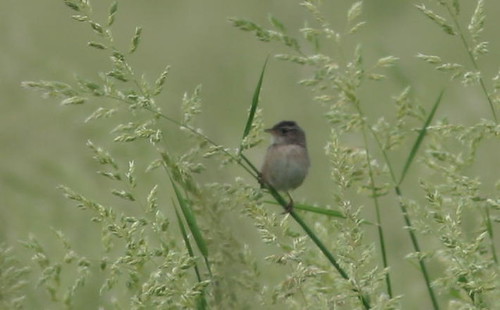
This Sedge Wren, photographed on June 10, was not very cooperative. I heard its distinctive song as we were walking along the grass track through the restored prairie at the east entrance of Dick Young/Nelson Lake Marsh Preserve, in Batavia, Illinois. It was about 40-50 yards out. Luckily, it chose to stay put for several minutes.
A Common Yellowthroat that shared the Sedge Wren’s habitat, peered out from the underbrush along the trail:
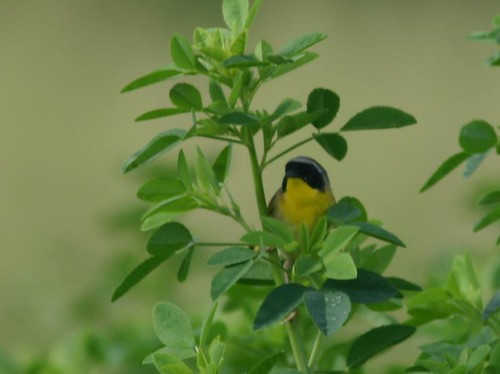
The amount of white that borders the Common Yellowthroat’s black mask iq quite variable. This bird shows quite an extensive white area:
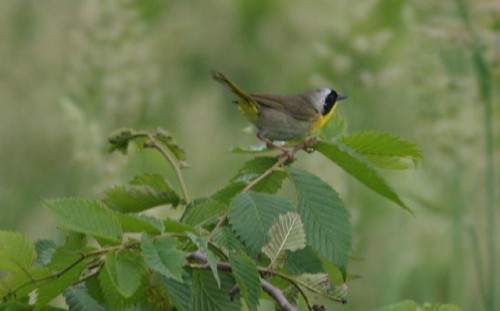
This Song Sparrow appears to be in a pensive mood:
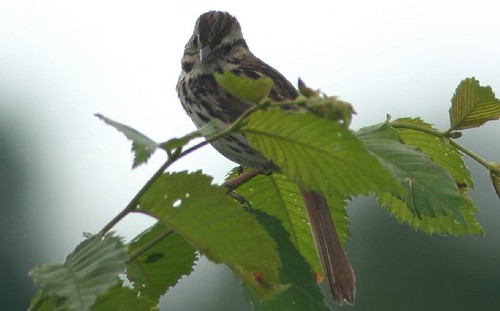
You just have to love its song:
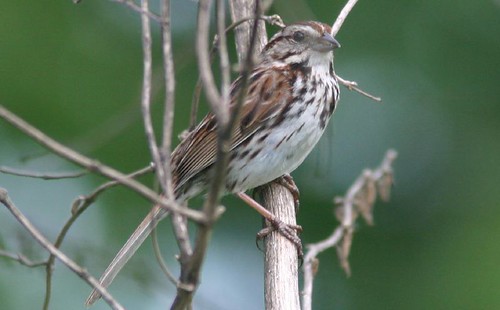
“Fitz-Byew” calls of Willow Flycatchers rang out along the margin of Nelson’s Lake. In this view, the eye ring is barely visible:
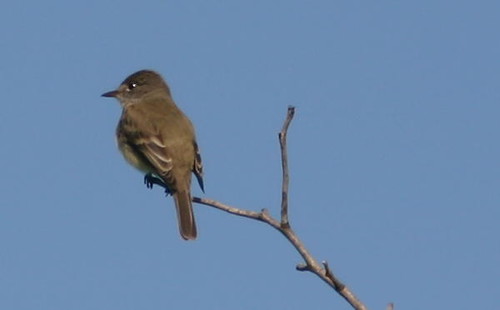
The lower mandible is lighter in color, and, in spring, the belly of the Willow Flycatcher may have a yellowish cast:
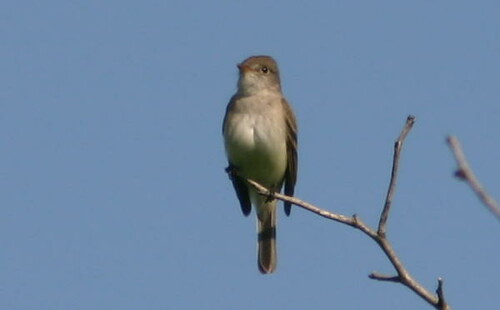
Indigo Buntings were numerous and vociferous:
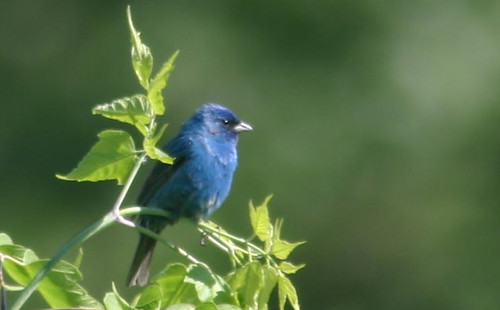
A Yellow-billed Cuckoo flew by and I snapped one shot before it disappeared. Can you find it among the branches?
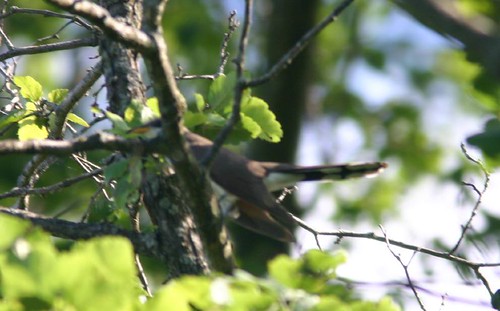
Wild white roses were in bloom: